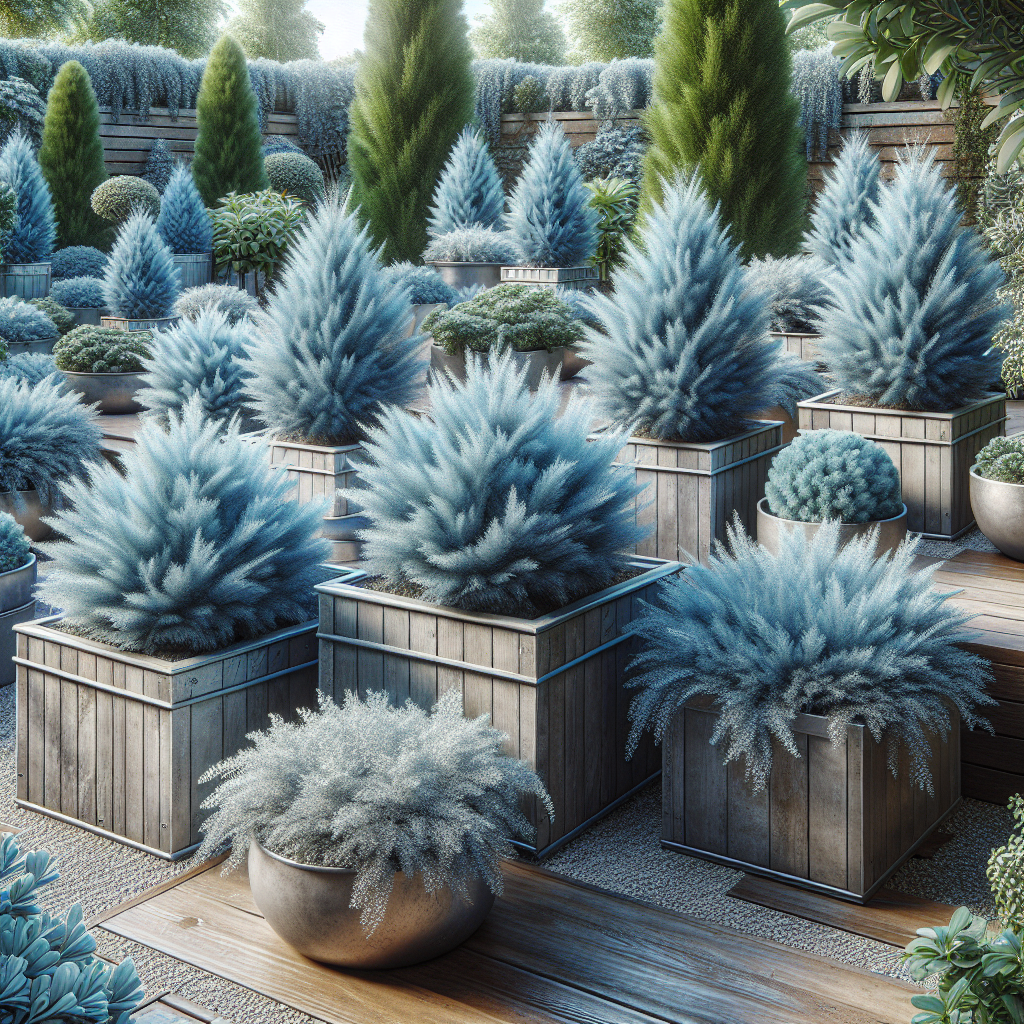Blue Point Juniper (Juniperus chinensis ‘Blue Point’) is a popular evergreen shrub that is prized for its striking blue-green foliage and graceful, pyramidal form. This plant is particularly well suited for container gardens, where its compact size and attractive appearance can create a stunning focal point. In this article, we will explore the aesthetic appeal of Blue Point Juniper in container gardens and provide tips on how to care for this beautiful plant.
One of the key reasons why Blue Point Juniper is so well-suited for container gardens is its compact size. This plant typically grows to a height of 10-12 feet and a width of 3-4 feet, making it ideal for smaller spaces such as patios, balconies, or courtyard gardens. Its narrow, pyramidal form also adds a vertical element to the garden, helping to create visual interest and balance.
The most striking feature of Blue Point Juniper is its foliage, which is a beautiful blue-green color that stands out against the backdrop of other plants in the garden. The foliage consists of small, scale-like needles that are arranged in overlapping whorls along the stems. This gives the plant a dense, full appearance that can add texture and depth to container gardens.
In addition to its foliage, Blue Point Juniper also produces tiny blue-black berries in the fall that add visual interest to the plant. These berries are not only attractive but also provide food for birds and other wildlife, making Blue Point Juniper a valuable addition to any garden.
Another factor that contributes to the aesthetic appeal of Blue Point Juniper is its versatility. This plant can be used in a variety of ways in container gardens, from serving as a focal point in a mixed planting to providing structure and definition in a winter display. Its year-round interest makes it an excellent choice for adding color and texture to containers throughout the seasons.
When it comes to caring for Blue Point Juniper in containers, there are a few key considerations to keep in mind. First and foremost, make sure to choose a large enough container with good drainage holes to accommodate the root system of the plant. Blue Point Juniper prefers well-drained soil and thrives in full sun or partial shade.
Watering is another important aspect of caring for Blue Point Juniper in containers. While this plant is drought-tolerant once established, it still requires regular watering during the growing season to thrive. Check the soil moisture regularly and water as needed, making sure not to overwater as this can lead to root rot.
Fertilizing is also important when growing Blue Point Juniper in containers. Use a slow-release fertilizer formulated for evergreen shrubs in early spring before new growth appears. Avoid fertilizing late in the growing season, as this can stimulate new growth that may be damaged by frost.
Pruning is another aspect of care that can help maintain the health and appearance of Blue Point Juniper in containers. This plant does not require pruning unless you want to shape it or remove dead or diseased branches. Prune lightly in late winter or early spring before new growth begins.
Overall, Blue Point Juniper is an excellent choice for adding beauty and elegance to container gardens. Its compact size, striking foliage, versatility, and ease of care make it a top pick for both beginner and experienced gardeners alike. Whether used as a focal point or as part of a mixed planting scheme, this stunning evergreen shrub is sure to enhance the aesthetic appeal of any container garden.
In conclusion, Blue Point Juniper’s aesthetic appeal lies in its striking blue-green foliage, graceful form, versatility, and ease of care when grown in containers. By following these tips on care and maintenance, you can enjoy the beauty of this stunning evergreen shrub throughout all seasons. Consider adding Blue Point Juniper to your container garden today and watch as it transforms your outdoor space into a lush oasis of beauty and tranquility.













